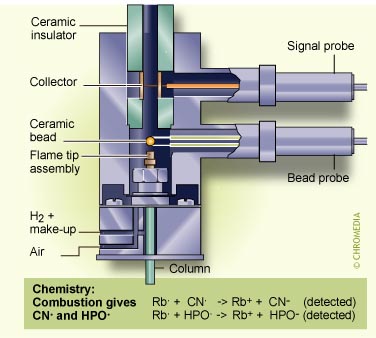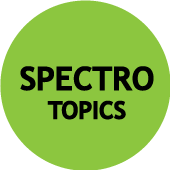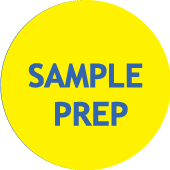The nitrogen phosphorus detector (NPD) is a selective detector for nitrogen and phosphorus-containing compounds. Its detection principle is not fully understood but appears to be based on the electronic conductivity of a flame in presence of an alkali metal salt and changes therein caused by nitrogen or phosphorus in the compounds entering the detector.
Nitrogen and phosphorus specific detector
| Detector operation:
|
Detector gases and gas flow: The NPD uses both hydrogen and air, but in much smaller quantities than the FID. The small (3 - 5 mL/min) hydrogen flow is controlled by a mass flow controller, since needle valves are not accurate enough in this flow range. Typical air flow is 50 mL/min.
The NPD is essentially a modified FID. While the FID uses a polarization electrode, the NPD is equipped with a special bead/polarization assembly. The NPD is electronically similar to the FID, with a cylindrical anode at a positive potential with respect to the jet and bead. In contrast to the FID the NPD does not require a separate make up flow although this may be provided in some instruments.
 Did you ever try to explain separation to your employees or students? Well, try no more: Lee Polite did it for you in a way which is hard to beat. We will open up one example of his whiteboard class.
Did you ever try to explain separation to your employees or students? Well, try no more: Lee Polite did it for you in a way which is hard to beat. We will open up one example of his whiteboard class. 




